My notes on the topic:
Karl Bodmer [Carl]
Swiss painter hired as artist on a Missouri River expedition in the 1800's.

(Cropped Wiki map.)
Here's a photo I took in July 2007 of the Missouri River North of Bismarck along Hwy 1804, which is a pretty scenic drive if you are ever in the area.
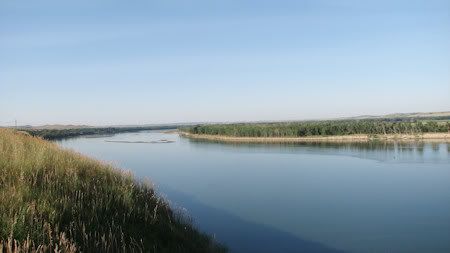
Bodmar's artwork is public domain and can be found at wiki commons.
Also found some Black and Whites.
And Keelboats.
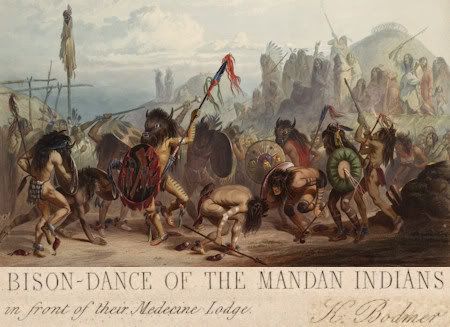
Bison dance of the Mandan indians in front of their medecine lodge. (Medicine is spelled medecine.)
Wow. These guys were in good shape, lol.
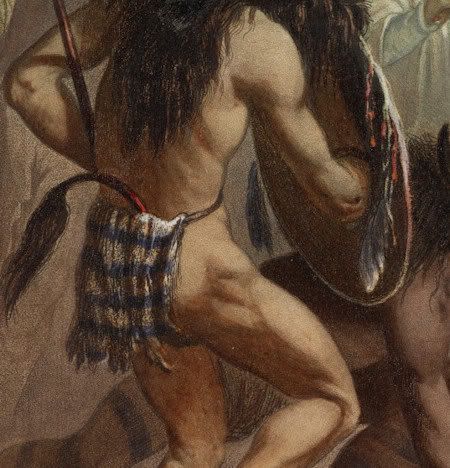
Some of the places mentioned in the artwork:
Fort Union
Missouri River and the North Dakota/Montana border twenty-five miles from Williston.
Fort Pierre (SD)
The site where the Lewis and Clark Expedition met with the Teton Sioux is located nearby. It derives its name from Pierre Chouteau, Jr., a fur trader who established the fort.
Fort Clark
(Fort Osage)
Near Sibley, Missouri.
List of settlements along Missouri River.
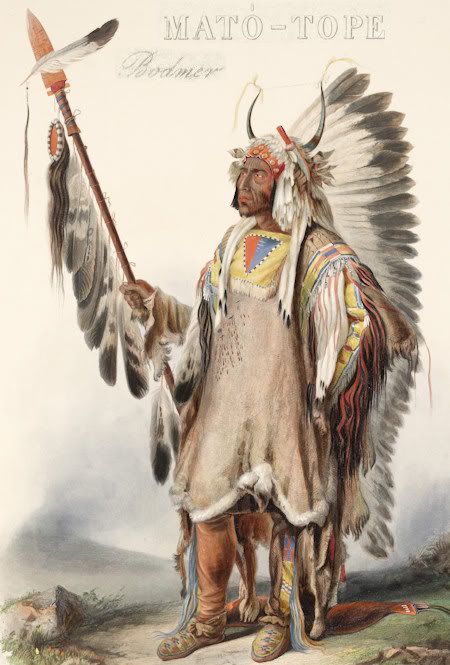
Mandan Chief
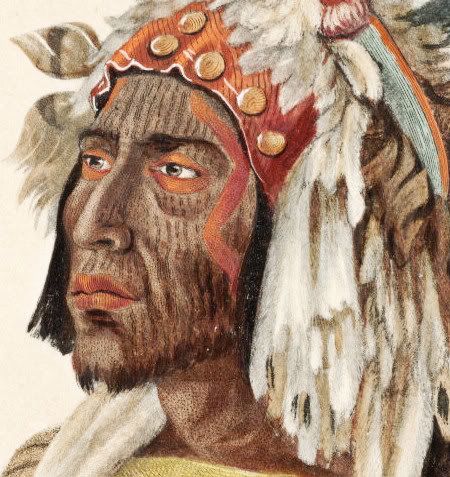
Mato-tope
Mato-tope (Ma-to-toh-pe or Four Bears) (b. c.1795 - d. 30 Jul 1837)
Second chief of the Mandan tribe.
Lived on the upper Missouri River in what is now North Dakota.
Notes from the book:
The Way It Was
The North Dakota Frontier Experience
Book Five: Native People c. 2002
By Everett C. Albers and D. Jerome Tweton, Editors
Introductory Section:
Native People: Differences and Similarites, by D. Jerome Tweton
"We Indian people, like the winged ones, are all different, but like the winged ones, we are all alike."
—Hidatsa grandmother
Five groups of Native Americans in ND history:
1. Mandan
2. Hidatsa
3. Sanish (Arikara)
4. Chippewa (Ojibwa)
5. Great Sioux Nation (Lakota, Nakota, Dakota)
a. Dakota - Santee/Wahpeton/Sisseton
b. Nakota - Yankton/Yanktonai
c. Lakota - Tetons
They traveled different paths to the region, did not get along, and pursued a different way of life.
Chippewa drove the Nakota and Lakota onto the Plains.
Lakota pushed the Sanish northward.
Animosity between Chippewa and Sioux.
Conflict between Sanish and Lakota.
Mandan, Hidatsa, Sanish were farmers along Missouri River.
Chippewa were hunters/traders, some farmers.
Nakota hunters/farmers mix.
Lakota hunters.
Three different languages:
Sanish - Caddoan
Chippewa - Algonquian
Mandan, Hidatsa, Sioux - Siouan
They all hunted buffalo.
The intro concludes with:
“The westward march of white settlers and their demand for land, of course, led to conflict on the plains. The army with its chain of protective forts led the way for white settlement. The ultimate result was the reservation and the restriction of the Native People to those, often too small, reserves. Government policy attempted to turn hunters into farmers, to change Native People into white people. Toward that end Indian ways—ceremonies, religion, long hair, language—were banned. As the interviews in this book illustrate, the adjustment to the reservation was severe. The old life, the free life, was forever gone for all Native People.”
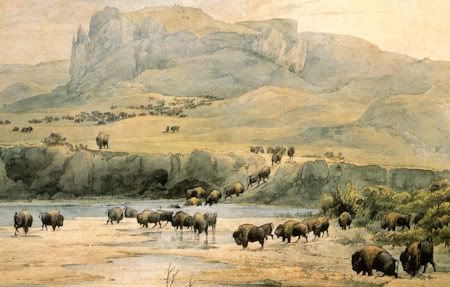
Bison Landscape
Battle of Little Bighorn was in 1876.
Wounded Knee was in 1890.
Dakota Territory was 1861-1889.

No comments:
Post a Comment